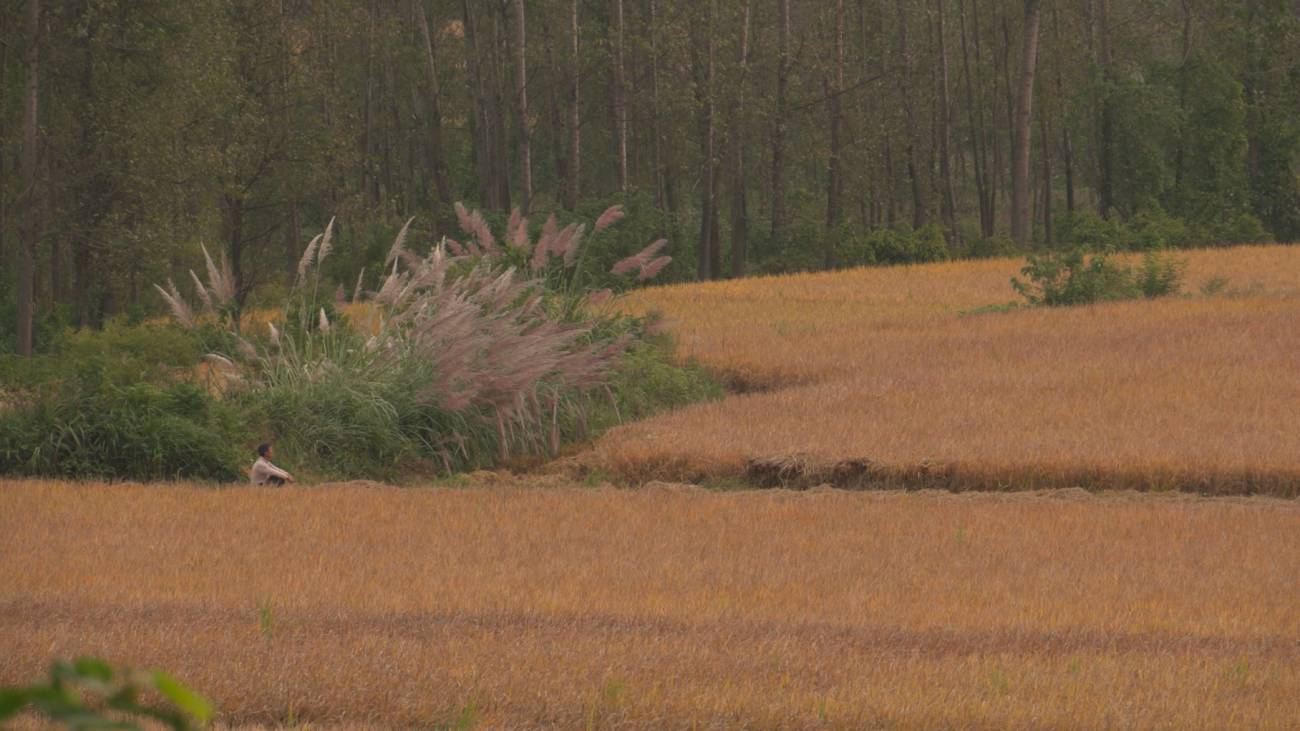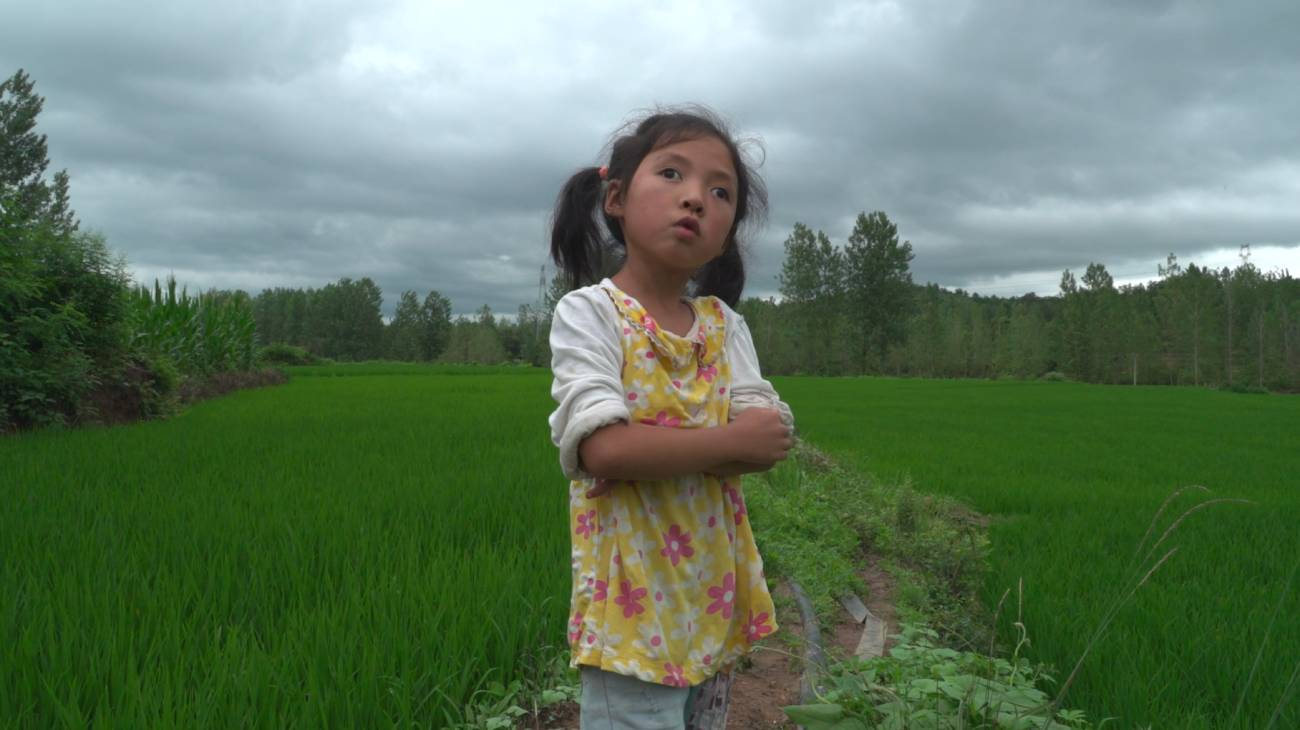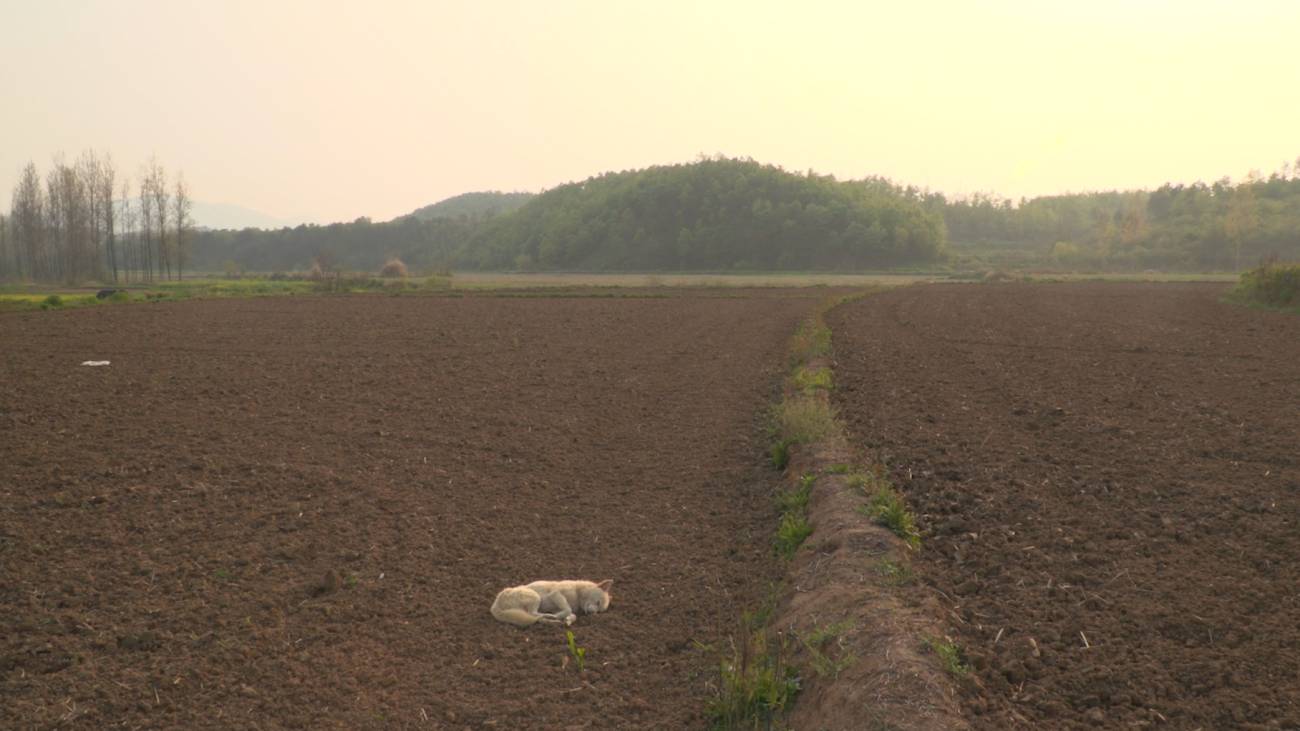When we see the words “self-portrait”, there’s a certain type of imagery it conjures. The beauty, of self-portraiture (or drawback, depending on your perspective) is in its limited point of view, which may appear at odds with the medium of documentary filmmaking. Self-Portrait: 47KM 2020 (2023) is therefore a curious title, at least initially.
Self-Portrait: 47KM 2020 is the eleventh instalment in filmmaker Zhang Mengqi’s ongoing series “Self-Portrait”, which first took root in Wu Wenguang’s Folk Memory Project (2010), a project aimed at collecting oral histories from the rural Chinese populace who lived through the Great Famine between 1958 to 1961. Since then, Zhang has continued to document stories from her father’s hometown located 47 kilometres from Yindian Town in Suizhou, Hubei. Also known as Diaoyutai Village, Self-Portrait: 47KM 2020 (2023) is the first film in the ‘Self-Portrait’ series which would see Zhang documenting the entirety of a year in the village, and serves as a record of the village during the 2020 pandemic and its initial outbreak.
The film received an “Award of Excellence” at the Yamagata International Documentary Film Festival in Japan and was selected in the Official Competition in the BFI London Film Festival. Most recently, it was selected to screen at New York City’s Museum of the Moving Image as part of First Look 2024. We caught up with director Zhang during her trip to New York to present the film for the first time to a North American audience.
This interview has been edited and condensed for clarity.

I understand from a previous interview that you studied dance before you became a filmmaker. I am curious, how did you become interested in films and documentary filmmaking?
When I was a young girl, my mother always wanted me to learn something related to art, like painting or piano. Dance is associated with exercise and freedom, but when I entered a dance school, I didn’t like it and I didn’t know why I was dancing. Then I started college and started learning contemporary dance and modern art and performance and it felt new again. Between 2008 and 2010, I watched documentaries about contemporary theatre and contemporary dance companies like Pina Bausch’s, and I also got to watch a performance from a Japanese dance company in Beijing, and [dance] became even more interesting to me. I saw real people and real movement on stage, and I wanted to do something like that.
My first film in the “Self-Portrait” series is with three women and it is a dance piece. I used footage that my mother recorded about her daily life, which included the records of her pregnancy and my birth. I tried to link the dance performance to the documentary footage. It has become very interesting for me to explore real life, and my idea of dance and presentation of the body. So that is how I first started filmmaking.
Then I joined the Caocangdi Work Station. It is a space owned by the filmmaker Wu Wenguang, and a dancer, Wen Hui. This place was very special at that time in Beijing. I started participating in this documentary workshop and learned how to use my camera even more.
This is the 11th film in your “Self-Portrait” series. I understand that they are all filmed in the village of Diaoyutai, 47 km from Yindian Town in Suizhou, Hubei, and it is your father’s hometown. Besides the fact that this film is shot over one entire year, what makes this different from the previous 10 films?
This [“Self-Portrait”] series is part of a larger project to collect oral histories. Not only myself, but many other filmmakers and art students are participating in the Folk Memory Project. At the beginning we didn’t think we were making films. We just wanted to interview and record the stories of people from my parents’ generation, because in China we cannot talk about this part of history during Mao Zedong’s era.
We chose this topic on The Great Famine because while you can see some of it being depicted in some films to do with the Cultural Revolution like Chen Kaige’s film [Farewell My Concubine (1993)], but you never learn about the ordinary people who are hungry, like the farmers, and how their lives are like during that time. The participants in the Folk Memory Project did not just want to make films and take the oral histories from the people. We wanted to build something because village life is really different from city life and there are few young people like me. My return to the village is considered very strange to the village folk. [My films mostly focus on] how the village folk survive and live right now, including the children. I use the title “Self-Portrait” because I think it is not only a film about the village, but it also represents an archive for myself to participate in the filmmaking process, and the relationship between me and the whole village.
This film is a new beginning for me, because before this film, I would only return to the village during the wintertime. But for this year, I lived the whole year in the village, and became part of the village.
You open the film with the children, and some of the children are very young, but they were very open and talkative. Some children can be very cautious and shy so how did you get these children to talk so freely to you on camera? And why did you decide to open the film with interviews with the children?
I think all the children and all the older ladies who became my very good friends in the village were very easy to get close to. I think maybe it’s because they’ve never met someone like me. I’m different from their parents and their older siblings, and so some of these children will ask me questions like, “Auntie, are you a child or are you an adult?” For them, I’m a curiosity. But because I ended up living in the village for such a long time, we had lots of interactions. I helped to build the library in the village and I taught them dance and filmmaking. It is very much a different relationship from if I was just a filmmaker and they are the subject of my film.
About why I choose to feature the children at the start of the film… It was important to consider how this was the year 2020, and Suizhou is near Wuhan. So when the pandemic happened, Suizhou was suddenly closed off, and for me, my life suddenly came to a stop. For me, I am able to anticipate that my filmmaking may be suddenly halted by the government, but for my work to be halted by the virus, that was totally different. During those three years, there were so many limits imposed on our movements by the government. So it was very important for me to know what is going on outside of the narrative pushed forward by the government. What is the truth, and what could be another way of understanding this year. So when the children gave me their answers, it is very fascinating what they said.
They are more honest?
Yes. But you can see and learn something from them too: they are scared, and they know what’s happening. Especially with the last girl in that segment, when she said “this is a secret, you cannot tell anyone,” this is something ideological and only known to them in their little hearts.

What is the significance of the Blue House in the village? How did it come to be? What is its significance and was it always there as a community space for the villagers to interact, both young and old?
The Blue House was built in 2019, just before the pandemic. That’s why I moved to the village. I’m actually not from this village, it’s my father’s family that lives there. So everytime when I visited the village, I would live with my uncle. I did not have my own space or house [and] I really wanted my own space, so I built a studio, a flexible space. In the city, there are museums and galleries, but in rural areas, arts education is always neglected. So I wanted to create a space like this. In the previous film [Self-Portrait: Fairy Tale in 47KM (2021)], it is about the story of the Blue House, about the children’s imagination of the space, and how it could be a space for them. The Blue House is a very new space in the village, the building looks totally different from other structures in the village. It’s in its beginning stages. It’s where I live, and where my studio is. You can see in the film that I’ve also built a stage for yoga, or dance, and also to do film screenings for the villagers.
When the villagers read the sign on the Blue House, there is a quote by Derek Jarman. I read that you enjoy watching films and other documentaries when you visit other film festivals. Do you have any filmmakers that you like or are influenced by?
My film and documentary-watching is mostly from film festivals. But I like Chantal Akerman a lot. She makes me think a lot about filmmaking. Because of Caocangdi workstation, Mr Wu Wenguang, who is the first generation of independent documentary filmmakers in China is a very important influence on me. The Japanese filmmaker Shinsuke Ogawa was also very important for me to think about when considering the project of filming this village, about a filmmaker’s relationship with the village. I think these filmmakers are the ones who have had conceptual and ideological influences on me.
Because this film is an observation of an entire year in a village, and it mostly focuses on the agricultural elements, how do you choose what moments to include of the individual villagers?
I film everyday, and I film a lot, so it is very hard to edit it down to a film. The villagers are full of wisdom, and they are full of resilience. Despite all the setbacks of the year, they are able to pick up and continue on with their lives. It is different from the people in the city. So I was very curious as to how they are able to do this. This was my big question when it came to editing [the year’s footage]. Time is also very important in the village [because of farming], so I decided to divide the film into chapters according to the 24 solar terms. They relate to time differently in the village, where they use both the Gregorian and the Lunar calendar and do different things according to the different solar and lunar cycles. So for me, [when I edit] I go according to the time period, the type of labour and what is happening in the agricultural process.
What is the significance of the final scene? The shot of the dog sleeping in the fields was also used as the image for the poster. The whole film is filled with people, so I was curious why you wanted to choose a shot without people to bookend the story of a village in 2020?
When I first went back to the village, I was very afraid of the dogs. They would always bark at me, but very quickly we would become friends. And actually every year, you would be able to see new dogs. This shot is very special to me because it looks like despite all the horrible things that humans have gone through [that year], this dog is just sleeping peacefully in the field like it is a big bed. In China we have a saying, “all things under creation are equal”, and this shot made me really understand the meaning of this phrase.

This film was shaped by the pandemic as you ended up staying in the village for the entire year. But were there other plans for the way this film could have turned out had it not been for the pandemic?
I don’t think it was very different, but this was the first year where I lived entirely in the village, so this was the important thing for me, to observe how the village lived during the entire year. Before, I would always miss the summer and autumn months, and would only get to witness the winter and spring months. So this is what I wanted to do, to record the whole year during the pandemic.
When I screened this film in China, audience members asked me why after May and June, the villagers stopped talking about the pandemic. But actually, they are still responding to the pandemic in the way they move, and through their bodies and actions, less so through their words. So this was something new for me to observe, the conversations between nature and humans, and of the way bodies move.
What is it about the village that presents new stories to you for over 13 years, that you keep returning to film and create works about it?
The more I return to the village, the more I don’t have a sophisticated answer as to why. I fell in love with the village during that year. I think the village gets me. After the pandemic, when I talk to my friends about why and how we can continue our lives and our work. I feel as though I draw support from the village, and I find a place for myself in this village. I feel that I have grown up during this past decade filming in this village. Many filmmakers have come and gone, but for me, I have become friends with the villagers, with the old ladies and the kids, and when you become friends with them, you cannot just say goodbye to them. This is the most basic and emotional element for me, which is my attachment to this village.
How has your experience travelling around the world to show this film? You mentioned that you have shown the film in China. Is there a difference between audiences worldwide?
In China, my film cannot be shown in public cinemas so I would usually screen my film at underground cinemas or through online screenings1Writer’s Note: In China, for films to be screened in commercial (or public) cinemas, films are required to be submitted to the China Film Administration (part of the National Radio and Television Administration (NRTA). There are no ratings systems. It’s either a pass or not to be able to screen in public, commercial cinemas. This is the same system that Hollywood films, and any other film, must undergo in order to screen films in commercial Chinese cinemas. As such, filmmakers, including those in Hollywood, may edit their films if they receive feedback on any issues that may be deemed unsuitable for public consumption. Many independent Chinese filmmakers choose not to submit their films to the NRTA to avoid infringing on their creative freedom and expression. Their films may still get to screen in China through film festivals, underground film festivals and, as Director Zhang has pointed out, through underground cinemas and online.. For the Chinese people who have been through the pandemic, they are concerned about how people are so quick to forget about what happened in 2020. One of the first screenings I had was in Shenzhen. Shenzhen is a big city with a lot of young people that are very busy. The screening day was Wednesday, and after work. The film is three hours long and very slow, so I was really worried since this is my first screening in China. I was worried that people would fall asleep or just leave, but a lot of people stayed and it seemed like they had a meditative experience. This really exceeded my expectations. In Japan, people are very interested in watching the depiction of farming and rural life. It’s different in every country and it is very interesting.
Do you think you will continue to work on other projects in Diaoyutai/47km village or any projects outside of it?
I think I will continue working on projects inside the village, because it is special to me. Even after thirteen years, there are always new things coming up with this village. So for me it’s interesting to keep continuing to challenge myself to record the history of this village.
